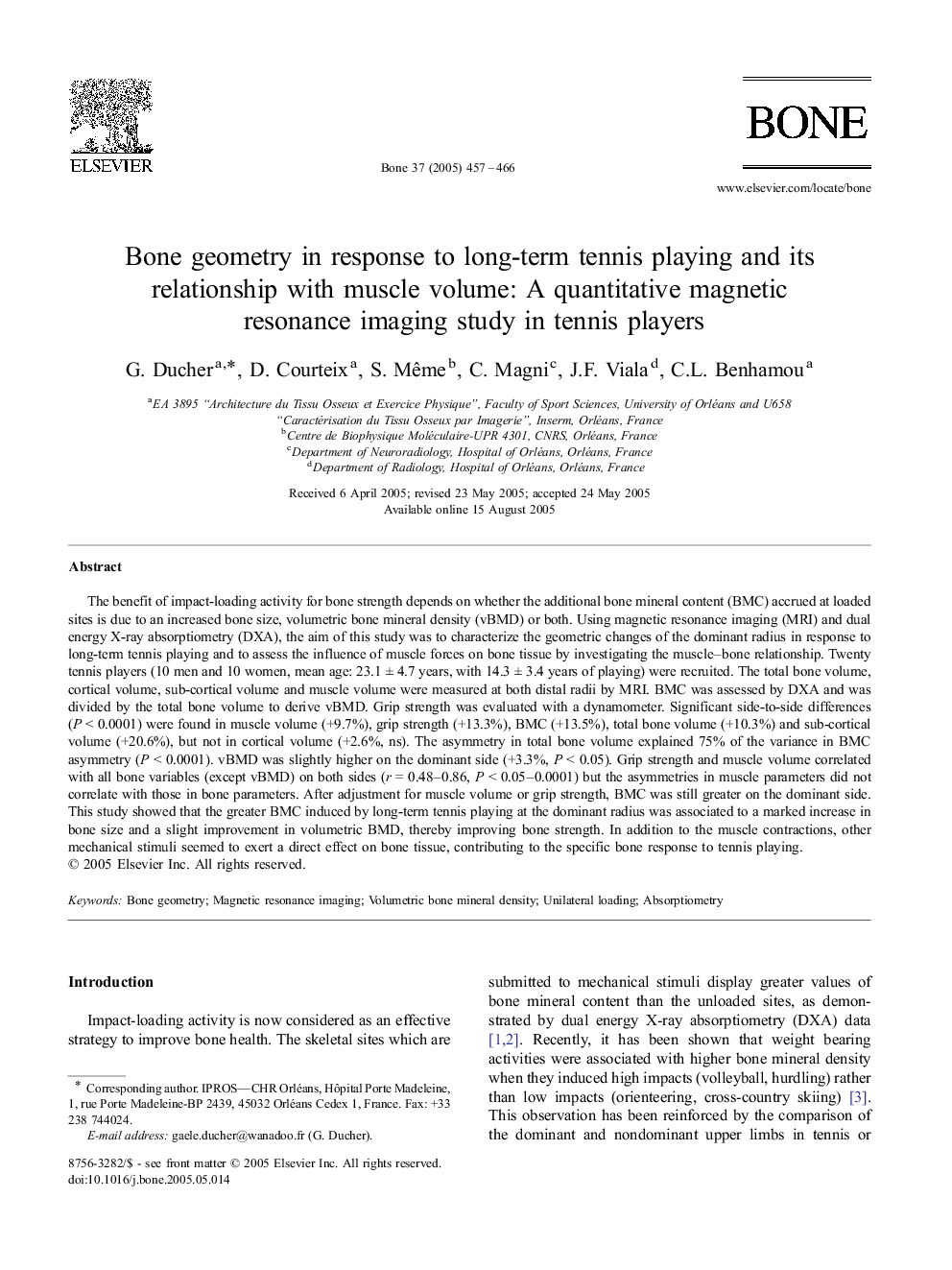| Article ID | Journal | Published Year | Pages | File Type |
|---|---|---|---|---|
| 9104600 | Bone | 2005 | 10 Pages |
Abstract
The benefit of impact-loading activity for bone strength depends on whether the additional bone mineral content (BMC) accrued at loaded sites is due to an increased bone size, volumetric bone mineral density (vBMD) or both. Using magnetic resonance imaging (MRI) and dual energy X-ray absorptiometry (DXA), the aim of this study was to characterize the geometric changes of the dominant radius in response to long-term tennis playing and to assess the influence of muscle forces on bone tissue by investigating the muscle-bone relationship. Twenty tennis players (10 men and 10 women, mean age: 23.1 ± 4.7 years, with 14.3 ± 3.4 years of playing) were recruited. The total bone volume, cortical volume, sub-cortical volume and muscle volume were measured at both distal radii by MRI. BMC was assessed by DXA and was divided by the total bone volume to derive vBMD. Grip strength was evaluated with a dynamometer. Significant side-to-side differences (P < 0.0001) were found in muscle volume (+9.7%), grip strength (+13.3%), BMC (+13.5%), total bone volume (+10.3%) and sub-cortical volume (+20.6%), but not in cortical volume (+2.6%, ns). The asymmetry in total bone volume explained 75% of the variance in BMC asymmetry (P < 0.0001). vBMD was slightly higher on the dominant side (+3.3%, P < 0.05). Grip strength and muscle volume correlated with all bone variables (except vBMD) on both sides (r = 0.48-0.86, P < 0.05-0.0001) but the asymmetries in muscle parameters did not correlate with those in bone parameters. After adjustment for muscle volume or grip strength, BMC was still greater on the dominant side. This study showed that the greater BMC induced by long-term tennis playing at the dominant radius was associated to a marked increase in bone size and a slight improvement in volumetric BMD, thereby improving bone strength. In addition to the muscle contractions, other mechanical stimuli seemed to exert a direct effect on bone tissue, contributing to the specific bone response to tennis playing.
Related Topics
Life Sciences
Biochemistry, Genetics and Molecular Biology
Developmental Biology
Authors
G. Ducher, D. Courteix, S. Même, C. Magni, J.F. Viala, C.L. Benhamou,
